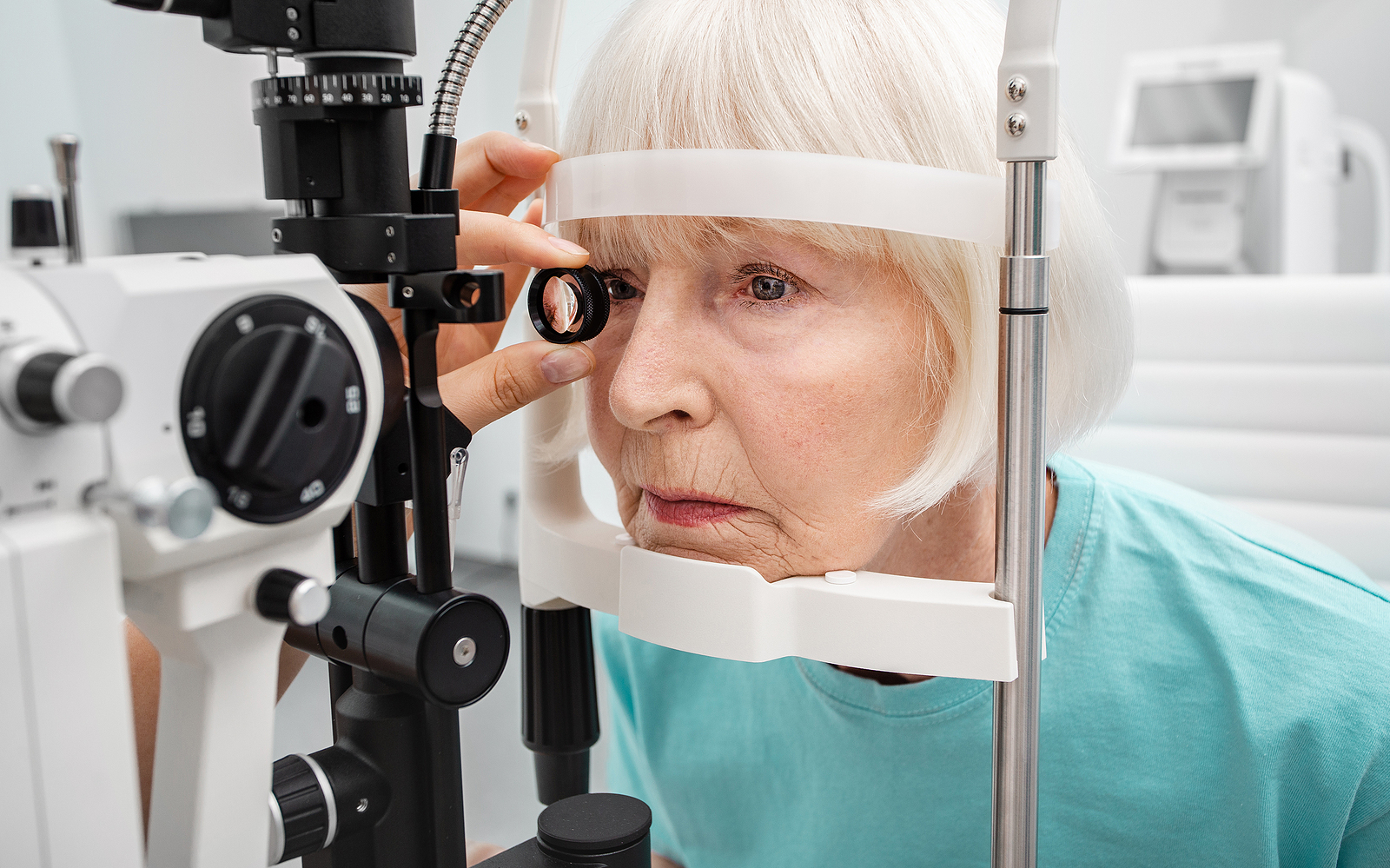Prevent Glaucoma-Related Vision Damage With These 5 Steps

If you’re worried about glaucoma, taking these five steps can help mitigate your risk.
Glaucoma is one of the leading causes of vision impairment in older Americans. In fact, research from the American Academy of Ophthalmology suggests that by age 65, one in three Americans will have a vision-impairing disease, with glaucoma leading the pack as the most common.
While the exact cause of glaucoma isn’t known, it’s believed to involve damage to the optic nerve caused by increased pressure on the eye. Factors such as genetics, age, thin corneas, and a history of farsightedness or nearsightedness can also increase your risk of developing the condition.
Glaucoma can be as serious as it is common, as it can cause blindness when left untreated. Fortunately, there are several steps patients can take to prevent the disease — or to address it quickly if it does develop.
1. Receive regular eye exams.
Diagnosing glaucoma early is the best way to stop it in its tracks, which is why receiving routine eye exams from a vision professional is crucial. During your eye exam, your eye doctor will conduct a glaucoma screening, which consists of checking your eye pressure, inspecting the drainage angle of the eye, testing your peripheral vision, and checking your optic nerve for damage.
If you’re 65 or older, it’s a good idea to get an eye exam every one to two years. However, if you’re at especially high risk of glaucoma due to a family history of the condition (or some other common risk factor), it may be wise to see your doctor more frequently. Your eye doctor can help you decide how often you should make appointments.
2. Consider taking certain medications.
Recent research suggests that statins, a type of drug designed to lower cholesterol, may also reduce one’s risk of glaucoma. Published in JAMA Ophthalmology in May 2019, the study followed 136,782 healthcare workers for 15 years, tracking both their statin use and their incidence of glaucoma. The researchers found that high cholesterol increases glaucoma risk, and that five years of statin use reduced this risk by 21 percent.
While these initial findings seem promising, you should never begin taking a new medication without first consulting with your doctor. Additionally, it’s important to note that this study does not address whether statins stop the progression of glaucoma; it simply reveals an apparent correlation between taking statins and staving off the disease.
3. Exercise regularly.
Though it may not seem like your exercise routine would have much to do with your vision, a regular program of moderate exercise has actually been shown to lower your risk of developing glaucoma.
However, the benefits of exercise only continue as long as you’re exercising consistently. As such, experts recommend a moderate program of walking and jogging three to five days per week versus a more aggressive routine that may lead to burnout.
4. Wear protective eyewear.
Preventing eye injuries is one of the easiest and most effective ways to reduce your risk of glaucoma. Though it’s not clear exactly why, eye injuries seem to increase pressure in the eye and significantly raise your risk of developing glaucoma.
For that reason, it’s wise to always wear protective eyewear when you’re engaging in activities that may cause harm to your eyes. This means wearing goggles during home improvement projects or science experiments, as well as when playing baseball, hockey, or other sports where a projectile may come into contact with the eye.
5. Monitor your blood pressure.
While eye pressure is a known risk factor for glaucoma, many patients don’t realize that their blood pressure can contribute to their glaucoma risk, as well. Ocular perfusion pressure, or the relationship between eye pressure and blood pressure, is a significant risk factor for glaucoma. If eye pressure is high and blood pressure is low, the blood may be unable to supply the eye with oxygen and important nutrients.
Ask an Eye Care Expert
If you’re concerned about your risk of developing glaucoma, or if you suspect you may already be in the early stages of the disease, the best thing you can do is schedule an appointment to talk to an experienced eye care professional.
Patients in Arizona should consider visiting the eye doctors at Swagel Wootton Eye Institute. With decades of collective experience, we are ready to ensure your eye health is at its best during every stage of your life. Make an appointment today at our Mesa and Chandler locations.
[DISPLAY_ULTIMATE_SOCIAL_ICONS]








